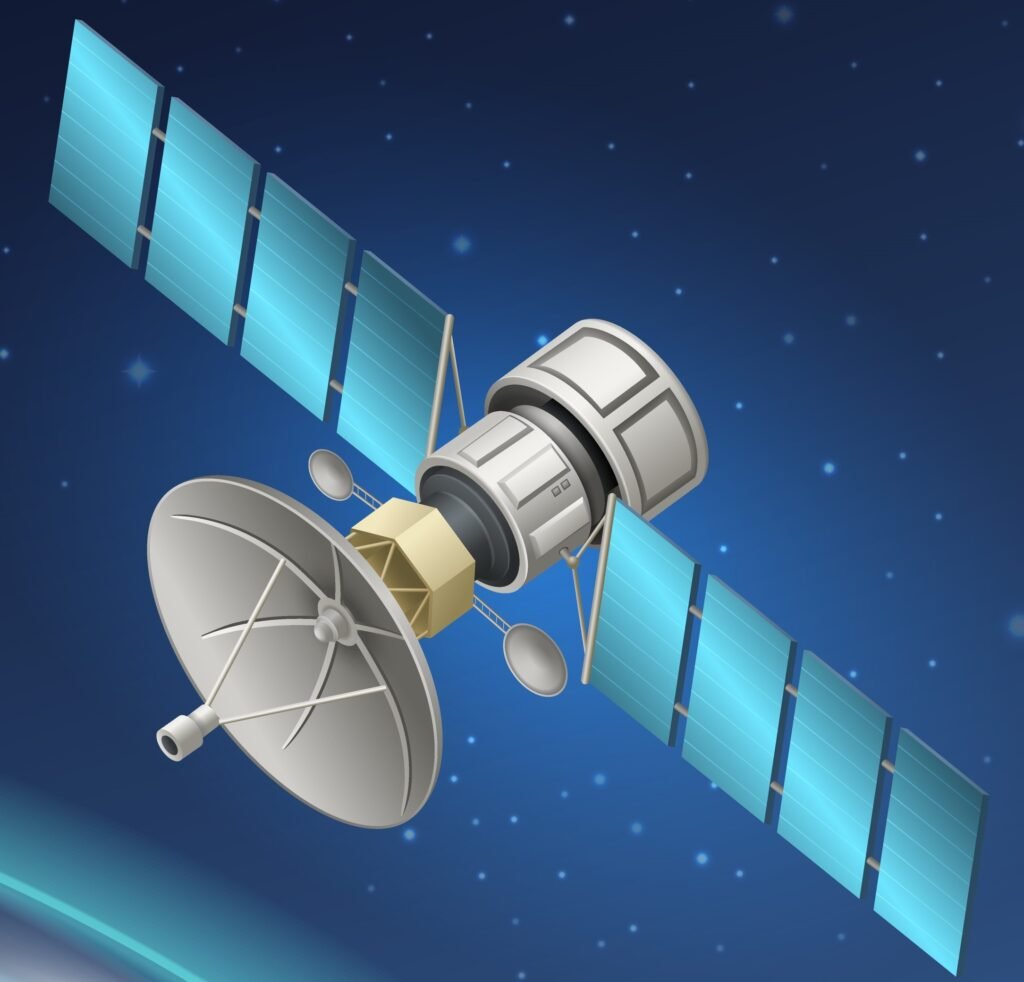What is a Satellite Orbit?
How Satellites Orbit the Earth: Satellites play a crucial role in modern life, enabling global communication, GPS navigation, weather forecasting, and more. But how do these objects stay in space, circling the Earth without falling back down? In this article, we will look into how satellites orbit the Earth, why they don’t fall, and the science behind their stable orbits. https://scienceandaerospace.blog/the-skys-the-limit-the-growth-of-the-luxembourg-space-industry.
The Delicate Balance of Orbital Mechanics
A satellite orbit is essentially the curved path a satellite follows around a planet, in this case, Earth. The key to understanding these celestial journeys lies in the delicate balance between two powerful forces: gravity and inertia. Earth’s gravity pulls the satellite towards the planet, while the satellite’s forward momentum propels it in a straight line. This interplay of forces results in a stable orbit, where the satellite perpetually ‘falls’ towards Earth without ever reaching its surface. It’s a captivating cosmic dance that keeps these human-made objects aloft.
Achieving Orbital Velocity
To maintain its orbit, a satellite must attain a specific speed known as orbital velocity. This critical speed is the point at which the centrifugal force generated by the satellite’s motion. Which perfectly counterbalances the gravitational pull of Earth. The required orbital velocity varies depending on the satellite’s altitude.
The Perfect Launch
A successful satellite launch requires a precise combination of altitude and speed. If launched too slowly, the satellite will fall back to Earth. Conversely, if launched too quickly, it may escape Earth’s gravitational grasp entirely. By achieving the exact velocity needed for its altitude, the satellite enters a stable orbit. Therefore ensuring its continued journey around our planet.
Types of Satellite Orbits
There are several types of satellite orbits, each designed for different purposes:
- Low Earth orbit (LEO) pertains to Earth-centered orbits at 1,200 miles (2,000 km) or less. Due to its proximity to Earth. This orbital region is deemed highly facilitative to efficient transportation, communication, observation, and logistical support. https://scienceandaerospace.blog/the-skys-the-
- limit-the-growth-of-the-luxembourg-space-industry/ Furthermore, it currently serves as the orbital path for the International Space Station and is earmarked as the potential location for numerous forthcoming space platforms.
- Medium Earth Orbit (MEO): With altitudes ranging from 2,000 to 35,786 kilometers, MEO satellites, like GPS satellites, cover larger areas of the Earth’s surface. These satellites are crucial for navigation systems.
- Geostationary Orbit (GEO): Positioned at 35,786 kilometers above the equator, satellites in GEO remain fixed over one location. This orbit is essential for communication satellites and weather forecasting.
- Polar Orbit: These satellites pass over the Earth’s poles, allowing them to cover the entire planet over time. Polar orbits are frequently used for environmental monitoring and global mapping.
Why Satellites Don’t Fall Back to Earth.
Satellites remain in orbit because of the balance between gravity and forward velocity. Earth’s gravitational pull constantly pulls the satellite toward the planet, but the satellite’s speed keeps it moving forward. Essentially, the satellite is in “continuous freefall,” but it never collides with the Earth’s surface because it’s moving so fast.
This delicate balance ensures that satellites can remain in space for years, continuously orbiting the Earth while performing their essential functions.
Do Satellites Stay in Orbit Forever?
While satellites can stay in orbit for long periods, they don’t remain there indefinitely. Over time, various factors can cause satellites to fall out of orbit, such as:
Atmospheric drag: Satellites in low Earth orbit experience a small amount of air resistance from the thin atmosphere, gradually slowing them down and pulling them closer to Earth.
Gravitational and Solar Influences
The Moon and Sun’s gravity can slightly tug a satellite’s orbit over time. Sunlight, especially on large solar panels, can also exert pressure, nudging a satellite off course.
Orbital Decay and Disposal
As a satellite’s orbit decays, operators have two options:
- Controlled Re-entry: They can guide the satellite back into Earth’s atmosphere, where it burns up harmlessly.
- Graveyard Orbit: They can move the satellite to a higher orbit, a “graveyard,” to minimize the risk of collisions with active satellites.”
How Satellites Impact Our Daily Life
Satellites play a vital role in modern life. From enabling instant communication across the globe to providing accurate weather forecasts and GPS services, they have revolutionized the way we live, work, and interact. Whether monitoring climate change, delivering high-speed internet, or guiding aircraft, satellites are not just essential, they are the unsung heroes of our connected world.
The Science Behind Satellite Orbits
Understanding how satellites orbit the Earth is fundamental to appreciating their indispensable role in modern technology and society. The delicate balance of gravity and velocity keeps these celestial objects aloft, providing essential services that underpin our daily lives.
As satellite technology continues to evolve, their importance in communication, navigation, and environmental monitoring will only grow, unlocking exciting new possibilities. From the convenience of internet connectivity to accurate weather forecasts, we rely on satellites to keep our world connected and informed.
By delving into the complex physics behind satellite orbits, we gain insight into the marvels of science that enable our modern world to thrive


